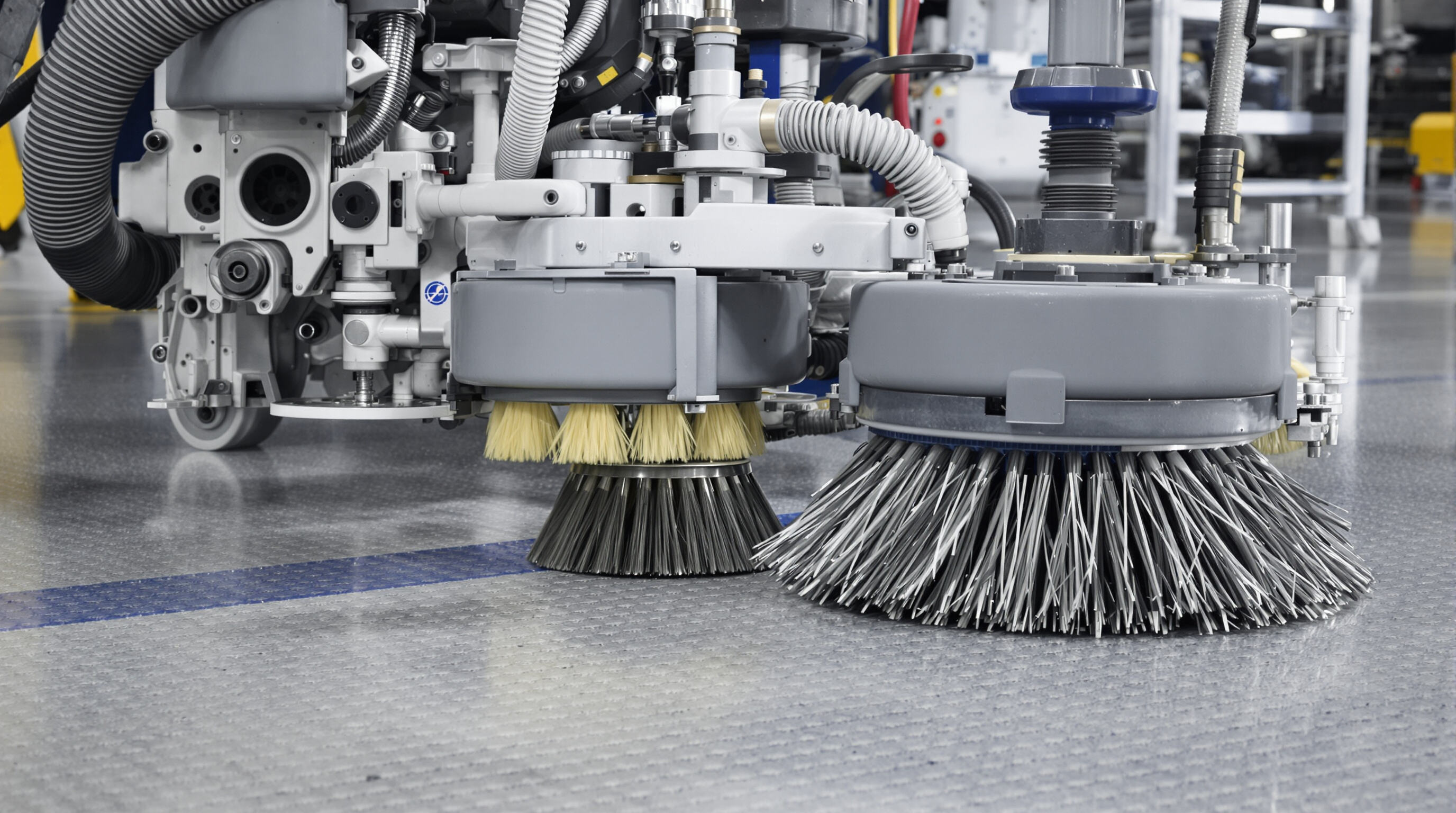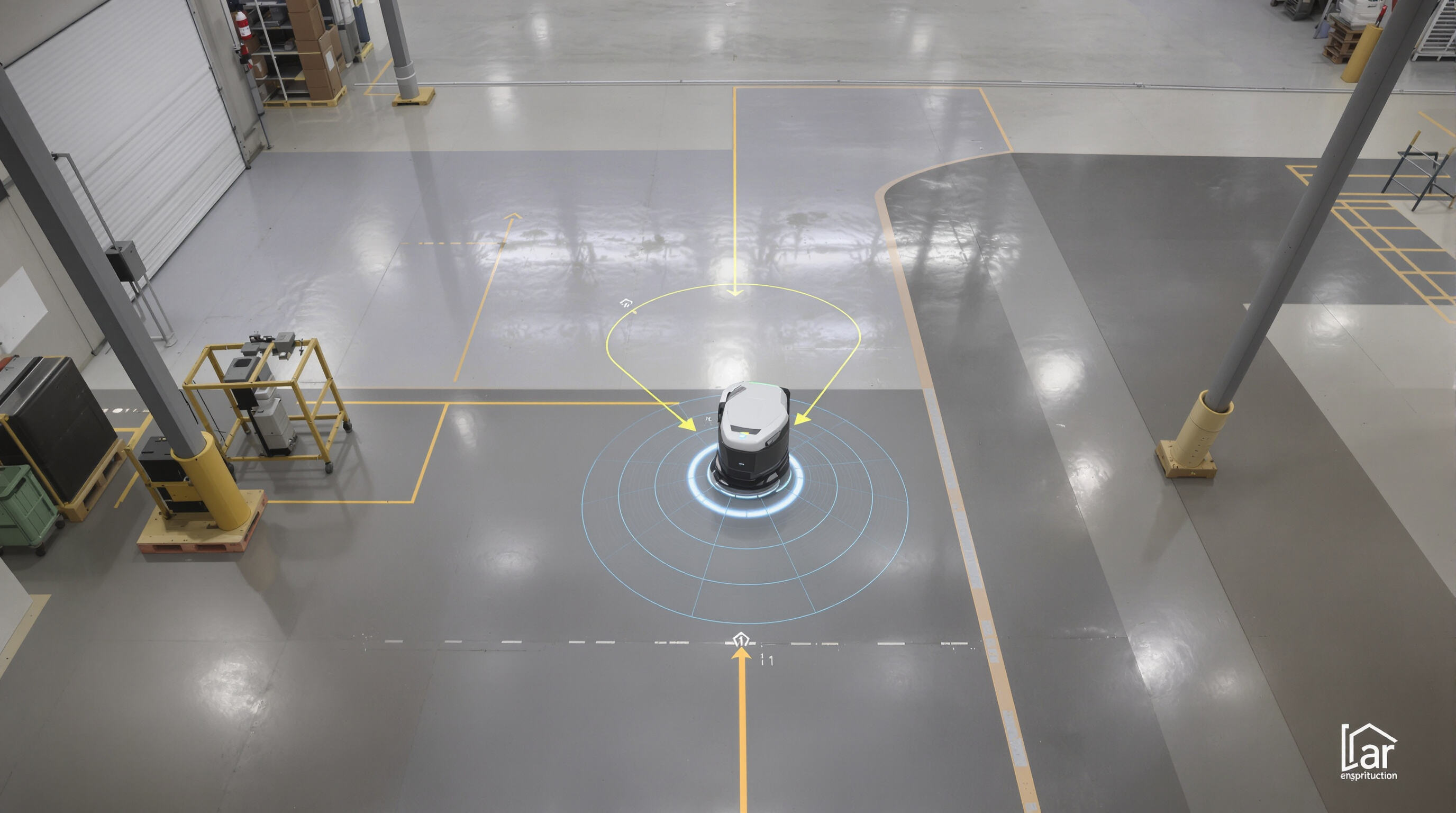Understanding Floor Surface Compatibility and Cleaning Efficiency
Common Floor Types: Concrete, Asphalt, Epoxy, Tile, and Resilient Flooring
Floor sweepers today need to handle all sorts of different surfaces, really. Think about it: there's porous concrete where dust just gets stuck everywhere, rough old asphalt that's full of cracks, shiny epoxy floors that are basically mirrors, those grouted tiles with all their little gaps, and then there's resilient flooring found in most warehouses. Each one gives cleaning crews headaches in different ways. Concrete tends to hold onto tiny bits of dirt because of how bumpy it is, whereas epoxy needs just the right amount of brushing pressure so stuff doesn't end up flying around instead of getting picked up. And let's not forget about resilient flooring in industrial spaces. These floors can get damaged easily if scrubbed too hard, but still need to stay pretty clean since nobody wants to see food particles or oil spots on them after cleaning. The goal is always to keep things looking good without wrecking the surface itself.
Impact of Surface Texture on Debris Adhesion and Cleaning Performance
The roughness of surfaces plays a big role in how well they clean. Recent research from 2023 on material interactions showed something interesting about different surfaces. Porous concrete holds onto about 40 percent more dirt particles than smooth epoxy surfaces do. And if we look at textured asphalt versus sealed floors, vacuum systems need almost three times as much power to get rid of all the debris stuck in those rough textures. That's why modern cleaning equipment has started incorporating adaptive sweeping technology. These machines adjust their brushes automatically based on what surface they're dealing with. Stiff nylon bristles work great for getting into concrete cracks and crevices where dirt hides, but when moving to more delicate areas like vinyl flooring, the sweepers switch to softer PET fibers so they don't damage the surface during cleaning operations.
Performance Metrics: Pickup Efficiency, Residue Removal, and Pass Consistency
Key benchmarks reveal operational insights:
| Surface Type | Avg. Pickup Efficiency | Optimal Passes |
|---|---|---|
| Epoxy Coatings | 98% | 1 |
| Textured Concrete | 85% | 2-3 |
| Resilient Flooring | 93% | 1-2 |
Tile floors show 15% higher residue retention in grout lines versus flat surfaces, requiring targeted side-brush systems.
Case Study: Multi-Surface Industrial Facility Using Adaptive Floor Sweepers
A 350,000 sq.ft manufacturing plant reduced cleaning time by 34% after implementing surface-detecting sweepers. The system automatically switched configurations between epoxy-coated production zones (gentle rotary brushes) and concrete loading docks (high-pressure cylindrical scrubbing), maintaining 91% average cleanliness across all surfaces during third-party audits.
Brush Systems and Adjustable Mechanisms for Optimal Surface Adaptation

Today's floor sweepers come equipped with different brush setups to tackle all sorts of flooring problems. The cylindrical brushes work really well for getting rid of dirt stuck deep in textured surfaces such as concrete floors. Disk brushes cover more ground when dealing with smooth epoxy surfaces. For those tricky corners near walls, side brushes made from tapered nylon bristles around 0.4 to 0.6 mm thick do a great job cleaning edges without scratching up baseboards. Testing has shown that polyurethane bristles cut down on concrete dust spreading by about two thirds compared to regular nylon ones, which makes them pretty popular among facility managers looking to keep their spaces cleaner.
How sweepers handle pressure calibration really makes all the difference between entry level machines and their high end counterparts. For tough jobs on asphalt surfaces, most experts recommend setting brush pressure between 18 and 22 PSI to get rid of particles effectively. But things change quite a bit when dealing with sensitive materials like vinyl flooring where pressures around 8 to 11 PSI work much better without damaging the surface. According to recent industry studies cited in the Industrial Cleaning Report from last year, factories saw nearly an 80% boost in how much dirt they could collect simply by sticking to what manufacturers suggest for pressure settings. Many top brands are now including preset options right on the machine itself for popular floor types too. Sealed concrete usually needs about 14 PSI while ceramic tiles respond well to around 9 PSI according to these factory defaults.
Three customization principles ensure surface compatibility:
- Bristle stiffness alignment with floor hardness (wire-reinforced for industrial concrete)
- Brush overlap adjustment (20–30% for uneven surfaces)
- Rotational speed ranges (800–1,400 RPM for mixed debris types)
Operators at a Midwest automotive plant reduced cross-contamination incidents by 41% after adopting modular brush systems that swap configurations in under 90 seconds. This adaptability proves particularly crucial in facilities transitioning between polished epoxy floors and diamond-grooved concrete loading docks.
Mechanical-Vacuum Integration for Enhanced Cleaning Across Surfaces
Modern floor sweepers combine mechanical brush systems with precision vacuum technology to address diverse surface challenges.
How Mechanical Agitation and Vacuum Systems Work Together
Rotating brushes loosen embedded debris, while synchronized vacuum suction captures particles before they resettle. This dual-action approach prevents dust clouds and reduces post-cleaning residue by 40% compared to standalone sweeping methods (Industrial Cleaning Institute, 2023).
Performance Data: 92% Particulate Removal on Asphalt With Dual-Action Cleaning
Recent field tests demonstrate that integrated mechanical-vacuum systems achieve 92% particulate removal efficiency on asphalt surfaces, even with fine gravel and silica dust. The vacuum’s adjustable airflow (150–300 CFM) ensures consistent performance across porous and uneven textures.
Optimizing Sweeper Components for Diverse Conditions (Moisture, Debris Size, Dust Control)
Operators tailor systems using three key adjustments:
- Moisture levels: Reduced suction power prevents water spread on sealed floors
- Debris size: Stiffer bristles for gravel, softer nylon for dust-heavy areas
- Filtration: HEPA filters for dust-prone environments, cyclonic separation for large debris
This adaptability allows a single sweeper to maintain optimal efficiency across 15+ surface types, from polished epoxy to industrial-grade concrete.
Walk-Behind and Ride-On Scrubber Performance on Delicate and Rugged Floors
Operational Challenges Across Tiles, Sealed Concrete, and Plastic/Resilient Flooring
Walk behind scrubbers are really good at getting around those tricky grout lines in tiles and won't scratch up vinyl composite tile (VCT) surfaces. Ride ons work better on sealed concrete where they stay stable without bouncing all over the place. But when it comes to plastic or resilient flooring, things get complicated. If the brushes press too hard, they might push apart those interlocking seams between floor sections. And rubberized surfaces tend to hold onto static dust unless the vacuum settings are just right. We've seen this happen plenty of times during cleaning jobs where improper setup leads to damaged flooring instead of clean floors.
Balancing Traction and Scratch Prevention on Smooth Surfaces
Scrubbers designed for polished terrazzo or epoxy-coated floors use soft bristle brushes (nylon/polypropylene blends) paired with adjustable downforce settings. Recent innovations include traction control systems that automatically reduce wheel torque on wet surfaces—a critical feature for preventing slippage during cornering on polished concrete.
Moisture Control Strategies for Porous vs. Non-Porous Surfaces
Non-porous surfaces like sealed concrete require tightly regulated water flow (1.2–1.5 gallons per minute) to avoid leaving residual streaks. For porous brick or unsealed stone, operators configure scrubbers to minimize liquid penetration using high-vacuum suction (≥120 CFM) and intermittent dispensing modes, reducing moisture retention by up to 60% compared to standard settings.
Smart Technology and Automation in Modern Floor Sweepers

Autonomous Navigation and Real-Time Floor Surface Detection
The latest generation of floor sweepers is making use of LiDAR technology along with 3D mapping capabilities so they can move around complicated spaces on their own while figuring out what kind of surfaces they're dealing with right then and there. When these machines switch between different flooring materials like polished concrete and those coated with epoxy, they automatically change their cleaning routes almost immediately. They manage to dodge obstacles with incredible accuracy down to the millimeter level. Looking at data from 2025 regarding AI powered robotic sweepers operating inside large distribution centers, there was about a 63 percent drop in spots where dirt got left behind compared to when people did the sweeping manually.
AI-Driven Adjustments: Brush Speed, Suction Power, and Moisture Output
Machine learning algorithms analyze floor texture and debris types to optimize settings:
- Brush RPM decreases by 40% on delicate vinyl surfaces to prevent scratching
- Vacuum suction increases by 55% on porous asphalt for embedded particle removal
- Moisture sensors limit water flow to 0.3 GPM on wooden floors while maintaining 98% drying efficiency
Case Study: Robotic Sweepers in a Smart Warehouse With Epoxy-Coated Concrete
A distribution center using automated sweepers with multispectral cameras achieved 99.4% particulate removal across 12 surface types. The system’s surface-adaptive programming reduced chemical usage by 34% through dynamic viscosity adjustments when transitioning between epoxy zones and bare concrete aisles.
Future Trends: Self-Learning Algorithms for Dynamic Surface Adaptation
Next-generation models feature neural networks that improve cleaning outcomes by 7% weekly through continuous pattern recognition. Prototype units in airport terminals automatically adjust brush hardness when detecting transitions from carpeted lounges to polished granite concourses, maintaining consistent debris recovery rates below 0.2 oz/yd² across mixed surfaces.
FAQ
What is adaptive sweeping technology?
Adaptive sweeping technology allows floor sweepers to automatically adjust their brush settings and configurations based on the type of surface they encounter, improving cleaning efficiency and protecting the floors from damage.
How do mechanical-vacuum systems enhance cleaning?
Mechanical-vacuum systems integrate rotating brushes to loosen debris and synchronized vacuum suction to capture particles, preventing them from resettling and improving cleaning outcomes by 40% compared to standalone sweeping.
Why is pressure calibration important in floor cleaning?
Proper pressure calibration ensures that cleaning machines apply the right amount of pressure specific to each surface type, optimizing cleaning effectiveness without risking damage to sensitive flooring.
Table of Contents
- Understanding Floor Surface Compatibility and Cleaning Efficiency
- Brush Systems and Adjustable Mechanisms for Optimal Surface Adaptation
- Mechanical-Vacuum Integration for Enhanced Cleaning Across Surfaces
- Walk-Behind and Ride-On Scrubber Performance on Delicate and Rugged Floors
- Smart Technology and Automation in Modern Floor Sweepers
- FAQ


